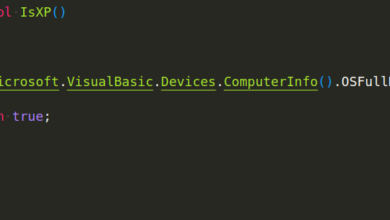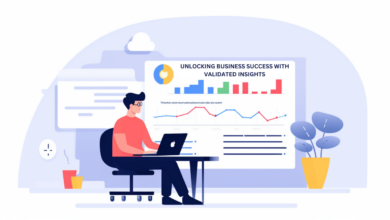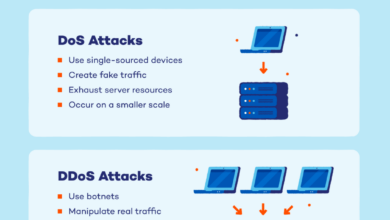
Covid Omicron Variant Leads to Phishing Cyber Attacks
Covid Omicron variant leads to phishing cyber attacks – it sounds like something out of a sci-fi thriller, right? But sadly, it’s a very real threat that emerged during the height of the Omicron surge. Cybercriminals, ever opportunistic, capitalized on the widespread fear and uncertainty surrounding the new variant to launch sophisticated phishing campaigns. They used everything from cleverly worded emails to fake text messages, all designed to trick people into handing over their personal information or infecting their devices with malware.
This post delves into the details of these attacks, exploring how they worked, who they targeted, and most importantly, how we can protect ourselves.
We’ll examine the various methods used, from cleverly crafted email subject lines mimicking official health alerts to fake websites offering Omicron-related information. We’ll also discuss the different types of phishing attacks – email, SMS, social media – and how effective each proved to be. Understanding the tactics used is the first step towards building a strong defense.
The Rise of Omicron-Themed Phishing Attacks

The emergence of the Omicron variant of COVID-19 in late 2021 wasn’t just a public health crisis; it also marked a significant surge in phishing attacks exploiting the widespread fear and uncertainty surrounding the new variant. Cybercriminals quickly capitalized on the global news cycle, using the Omicron variant as a lure to trick individuals into revealing sensitive personal and financial information.The increase in Omicron-themed phishing attacks followed a clear timeline.
As news of the variant spread, so did the number of malicious emails and websites designed to exploit public anxiety. This wasn’t a gradual increase; rather, it was a sharp spike in activity directly correlated with the variant’s global spread and the implementation of new restrictions and public health measures. This rapid response demonstrates the adaptability and opportunistic nature of cybercriminals.
Methods of Exploitation
Phishing campaigns leveraging the Omicron variant employed a variety of deceptive tactics. They preyed on people’s desire for accurate information about the virus, their concerns about potential health risks, and their anxieties about travel restrictions and economic impacts. Many campaigns mimicked official government or health organizations, creating a sense of urgency and legitimacy. Others played on people’s fears of infection or potential financial hardship.
This combination of fear-mongering and impersonation proved highly effective in deceiving victims.
Examples of Omicron-Themed Phishing Attacks
The following table illustrates the types of phishing attacks observed during the Omicron surge. Note that these are examples, and the specific subject lines, sender addresses, and links used constantly evolve.
| Subject Line | Email Sender | Phishing Technique | Link Target |
|---|---|---|---|
| Urgent: Omicron Exposure Notification | [email protected] | Impersonation of a legitimate health organization; urgency tactic | Malicious website requesting personal information |
| Your Omicron Test Results Are Ready | [email protected] | Impersonation of a testing facility; curiosity tactic | Website designed to steal login credentials |
| Omicron Relief Fund Application | [email protected] | Impersonation of a government agency; financial incentive | Fake application form leading to malware download |
| COVID-19 Omicron Travel Update | [email protected] | Impersonation of a travel agency; fear of travel restrictions | Phishing site collecting credit card details |
Types of Phishing Attacks Leveraging the Omicron Variant
The Omicron variant’s rapid spread created a fertile ground for cybercriminals. Exploiting public fear and anxiety surrounding the pandemic’s resurgence, they launched a wave of phishing attacks designed to steal personal information, financial details, and even healthcare data. These attacks cleverly leveraged the urgency and confusion surrounding the new variant to maximize their effectiveness. The methods used were diverse, targeting various communication channels and employing a range of deceptive tactics.The surge in Omicron-themed phishing attacks demonstrated a sophisticated understanding of human psychology and the vulnerabilities created by a global health crisis.
Criminals didn’t just rely on generic scams; they tailored their messages to reflect the specific anxieties and information needs related to Omicron, making them more believable and difficult to identify. This adaptability highlights the ever-evolving nature of cyber threats and the need for continuous vigilance.
Email Phishing Attacks
Email remains a primary vector for phishing attacks. During the Omicron surge, malicious emails often mimicked official health organizations, government agencies, or even pharmaceutical companies. These emails frequently contained urgent warnings about Omicron infections, fake test results, or promises of vaccines or treatments. The lures often involved attachments containing malware or links leading to fraudulent websites designed to harvest login credentials or financial information.
For instance, an email might claim to provide a “free Omicron test kit” requiring personal details for delivery, or warn of a potential exposure requiring immediate action via a malicious link.
SMS Phishing (Smishing) Attacks
Short Message Service (SMS) phishing, or smishing, also saw a significant increase during the Omicron wave. These attacks typically involved text messages pretending to be from health authorities or contact tracing teams. The messages often contained links to fake websites or requested personal information under the guise of scheduling vaccination appointments, providing test results, or issuing quarantine instructions.
The brevity of SMS messages forced attackers to be concise and impactful, relying on urgency and authority to persuade recipients to click malicious links. One example might be a text claiming a positive COVID test result requiring immediate action via a shortened URL.
Social Media Phishing Attacks
Social media platforms became another battleground for Omicron-themed phishing attacks. Criminals created fake accounts impersonating healthcare professionals, news organizations, or even public figures to spread misinformation and malicious links. These accounts often shared posts containing fabricated Omicron news, alarming statistics, or advice on unproven treatments. Users clicking on these links were often redirected to phishing websites designed to steal their data or install malware.
The social engineering aspect was crucial here, leveraging trust and the desire for accurate information during a time of uncertainty.
Comparison of Attack Vector Effectiveness
The effectiveness of different attack vectors varies depending on several factors, including the target audience, the sophistication of the attack, and the level of awareness among users.
- Email Phishing: Generally high effectiveness due to widespread email usage and the potential for sophisticated spoofing techniques. The ability to include attachments and detailed information enhances credibility.
- SMS Phishing (Smishing): Moderate effectiveness, often relying on urgency and brevity to entice clicks. The limited character count can restrict the level of detail, but the direct nature of SMS can be highly effective.
- Social Media Phishing: Effectiveness varies depending on the platform and the target audience. Social media’s reliance on trust and social interactions can make it a potent tool for spreading misinformation and malicious links, but careful scrutiny by users can mitigate its impact.
The Targets of Omicron-Related Phishing
The Omicron variant, with its rapid spread and significant impact on global health, provided fertile ground for cybercriminals. Phishing attacks leveraging the anxieties and information-seeking behaviors surrounding the pandemic were widespread, targeting a variety of individuals and organizations. Understanding who these attackers focused on and why is crucial for effective prevention and mitigation strategies. The motivations behind these attacks were largely financial, exploiting the urgency and fear associated with the pandemic to trick victims into revealing sensitive information.The targeting of specific demographic groups wasn’t random; attackers strategically chose their victims based on perceived vulnerability and potential return on investment.
Certain groups were more susceptible to falling prey to these scams due to factors like age, technological proficiency, and access to resources. The consequences for both individuals and organizations ranged from financial losses and reputational damage to the exposure of sensitive personal and business data.
Vulnerable Demographic Groups and Targeting Motivations
The success of Omicron-themed phishing attacks hinges on exploiting vulnerabilities within specific demographics. Elderly individuals, for instance, often possess less technological expertise and are more likely to trust unsolicited communications. Healthcare workers, overwhelmed and under pressure during the pandemic surge, were also prime targets, with attackers often posing as legitimate health organizations or government agencies. Businesses, particularly small and medium-sized enterprises (SMEs), lacked the robust cybersecurity infrastructure to effectively counter sophisticated phishing campaigns.
| Target Group | Motivation for Targeting | Type of Phishing Attack Used | Consequences |
|---|---|---|---|
| Elderly Individuals | Perceived lower technological literacy and increased trust in authority figures. | Emails promising COVID-19 relief funds or vaccine information; fake charity appeals. | Financial loss, identity theft, emotional distress. |
| Healthcare Workers | Access to sensitive patient data and high stress levels during the pandemic. | Spear-phishing emails impersonating colleagues, hospitals, or government agencies, offering fake updates or requesting sensitive information. | Data breaches, HIPAA violations, reputational damage to healthcare organizations. |
| Small and Medium-Sized Enterprises (SMEs) | Lack of robust cybersecurity infrastructure and reliance on employees for IT security. | Bulk phishing emails targeting employees with malicious links or attachments, often mimicking official communications. | Financial losses, data breaches, operational disruptions, reputational damage. |
| General Public | Widespread fear and uncertainty surrounding the Omicron variant and related restrictions. | Phishing websites offering fake COVID-19 tests, treatments, or vaccines; fake contact tracing apps. | Malware infections, financial loss, identity theft, exposure to misinformation. |
Technical Aspects of Omicron-Themed Phishing Attacks
Omicron-themed phishing attacks, while leveraging the urgency and fear surrounding the pandemic, rely on sophisticated technical methods to achieve their malicious goals. Understanding these techniques is crucial for effective defense. These attacks aren’t simply poorly written emails; they employ a range of tactics to bypass security measures and deliver their payload.The creation and distribution of these phishing emails often involves a combination of spoofing, malware delivery, and social engineering principles.
Spoofing techniques are used to convincingly mimic legitimate organizations, while malware delivery methods ensure the successful installation of malicious software on the victim’s system. The attackers carefully craft their messages to exploit human psychology and bypass security software.
Email Spoofing and Header Manipulation
Spoofing is a cornerstone of these attacks. Phishing emails are designed to appear as if they originate from trusted sources like the CDC, WHO, or even local health authorities. Attackers carefully craft the sender’s email address, often using subtle variations or typos to evade simple checks. They might also manipulate email headers to mask the true origin of the message.
For instance, an email might appear to come from “[email protected],” which superficially looks legitimate but contains a malicious domain. This requires a more in-depth analysis of email headers to detect. Beyond the sender address, the visual appearance of the email is also meticulously crafted to mimic the branding and style of the imitated organization, increasing its believability.
Malware Delivery Mechanisms
Once a victim opens the phishing email, the next step is malware delivery. This can involve several methods. One common approach is to include malicious links within the email body. Clicking these links redirects the victim to a compromised website hosting malware, often disguised as a legitimate update or information page. Another technique is to embed malicious attachments, such as seemingly innocuous Word documents or PDFs, which, upon opening, execute malicious code.
These attachments may exploit vulnerabilities in the victim’s software or use social engineering tactics to trick the user into enabling macros or downloading additional files. Sophisticated attacks might also leverage exploit kits to automatically identify and exploit vulnerabilities in the victim’s system.
Bypass of Security Measures, Covid omicron variant leads to phishing cyber attacks
Phishing emails are designed to bypass security measures like spam filters and antivirus software. Attackers use techniques like obfuscation to hide malicious code within the email or attachment. They might employ polymorphic malware, which constantly changes its code to evade detection. Furthermore, they might use advanced evasion techniques to bypass sandbox analysis, which is often used by security software to analyze suspicious files in a controlled environment before allowing them to execute.
The use of legitimate file types, like PDFs, can also help bypass basic security checks, as many filters are less likely to scan PDFs aggressively than executable files.
Hypothetical Phishing Email and Code
Let’s consider a hypothetical Omicron-themed phishing email. The subject line might read: “Urgent: Omicron Exposure Notification.” The email body would claim to be from the local health department and contain a link to a “confirmation page” to verify exposure status. The link, however, would redirect to a malicious website hosting a keylogger.While I cannot provide the actual malicious code due to ethical and security concerns, I can describe the functionality.
The malicious website would subtly prompt the user to enter personal information, such as their name, address, and social security number, under the guise of completing the verification process. This information would then be transmitted to the attacker’s server. In the background, the keylogger would record all keystrokes, capturing sensitive data such as passwords and credit card numbers.
The website’s design would closely resemble a legitimate health department website to increase the likelihood of successful deception. The visual elements would be crucial, including logos, fonts, and color schemes that mimic the target organization.
Countermeasures and Prevention Strategies
The rise of Omicron-themed phishing attacks necessitates a proactive approach to cybersecurity. Individuals and organizations must implement robust security measures to protect themselves from these sophisticated scams. This involves a multi-faceted strategy encompassing employee training, technological safeguards, and vigilant monitoring of email and online activity. Effective countermeasures are crucial to minimize the risk of falling victim to these attacks and preventing significant financial and reputational damage.The effectiveness of any prevention strategy hinges on a combination of technical solutions and user awareness.
Simply relying on technology alone is insufficient; employees need to understand how these attacks work and how to identify them. Conversely, the best technology is useless if users are unaware of the risks and fail to practice safe online habits. A comprehensive approach is therefore essential.
Identifying and Reporting Phishing Emails
A step-by-step guide to identifying and reporting suspicious emails is crucial in combating phishing attacks. First, carefully examine the sender’s email address. Legitimate organizations rarely use free email services like Gmail or Yahoo for official communications. Look for inconsistencies between the displayed name and the actual email address. Next, scrutinize the email content for grammatical errors, unprofessional language, or urgent requests for personal information.
Genuine organizations usually communicate in a formal and professional manner. If the email contains suspicious links, avoid clicking on them. Instead, hover your cursor over the link to see the actual URL. Discrepancies between the displayed URL and the actual URL are a major red flag. Finally, if you suspect an email is phishing, report it to your organization’s IT department or the appropriate authorities.
Never respond to the email or engage with the sender.
Security Tools and Technologies
Implementing robust security measures is paramount in mitigating the risk of phishing attacks. A layered approach is recommended, combining various technologies to provide comprehensive protection.
- Anti-phishing software: This software analyzes emails and websites for suspicious patterns and blocks known phishing attempts. Many email providers now include built-in anti-phishing features.
- Email authentication protocols (SPF, DKIM, DMARC): These protocols help verify the sender’s identity and prevent email spoofing, a common tactic used in phishing attacks.
- Multi-factor authentication (MFA): MFA adds an extra layer of security by requiring a second form of authentication, such as a one-time code sent to your phone, in addition to your password.
- Security awareness training: Regular training for employees on how to identify and avoid phishing attacks is crucial. This training should cover various phishing techniques and best practices for safe online behavior.
- Firewall and intrusion detection systems (IDS): These systems monitor network traffic and block malicious activity, helping to prevent phishing attacks from reaching users’ devices.
- Web filtering: Web filters can block access to known malicious websites and prevent users from visiting sites that may contain phishing attempts.
The Role of Misinformation and Disinformation
The Omicron variant’s emergence fueled a firestorm of misinformation and disinformation, creating fertile ground for phishing attacks. The rapid spread of inaccurate or misleading information about the virus, its severity, and available treatments directly impacted the success of malicious phishing campaigns. This wasn’t simply a coincidence; cybercriminals actively exploited the public’s fear, uncertainty, and confusion to increase the effectiveness of their scams.Malicious actors leveraged public anxieties and confusion surrounding Omicron in several key ways.
The constant stream of evolving information, often contradictory or unclear, created an environment ripe for manipulation. Phishing emails and websites mimicked official health organizations, promising vital information about vaccines, testing, or treatments. These fraudulent communications often contained links to malicious websites or attachments designed to steal personal data, financial information, or install malware. The urgency and fear surrounding the new variant made people more likely to click on suspicious links or open attachments without hesitation, significantly increasing the success rate of these attacks.
Misinformation Tactics Employed in Phishing Campaigns
The spread of misinformation wasn’t a passive phenomenon; it was a deliberate tactic employed by cybercriminals. For example, fake news articles about Omicron’s severity or the effectiveness of certain treatments were widely circulated, creating a sense of panic and urgency. Phishing emails often linked to these fabricated articles, claiming to offer exclusive information or access to scarce resources, thereby luring victims into traps.
Furthermore, social media played a significant role in amplifying these misleading narratives, making them appear more credible and reaching a broader audience. The speed and reach of social media made it particularly effective in disseminating false information and creating a climate of fear and uncertainty.
Infographic: The Link Between Misinformation and Phishing Success
The infographic would be titled “The Omicron Phishing Pandemic: How Misinformation Fueled Cybercrime.” The central image would be a stylized virus particle morphing into a phishing email icon, visually representing the transformation of misinformation into a cyber threat. The infographic would use a bar graph to compare the number of reported Omicron-related phishing attempts with the concurrent spread of key pieces of misinformation, using data from reputable cybersecurity firms and fact-checking organizations.
Specific examples of misinformation, such as false claims about treatments or vaccine side effects, would be clearly labelled, with links to fact-checking sources. The infographic would also include a pie chart showing the distribution of successful phishing attacks across different demographics, highlighting the vulnerabilities of specific groups more susceptible to misinformation. A map could illustrate the geographic spread of both misinformation and successful phishing attempts, revealing correlations between regions where misinformation was prevalent and where phishing attacks were most successful.
The overall design would be clean, utilizing a consistent color scheme and clear labels, to maximize readability and impact. The use of strong visuals would make the complex relationship between misinformation and phishing success readily apparent, even to those unfamiliar with cybersecurity.
Long-Term Impacts and Future Trends
The Omicron-themed phishing attacks, while seemingly a temporary phenomenon tied to a specific public health crisis, have left a lasting mark on both public trust in digital security and the evolving tactics of cybercriminals. The widespread nature of these attacks, coupled with the inherent urgency and fear surrounding a global pandemic, created a perfect storm for successful phishing campaigns.
Understanding the long-term consequences and predicting future trends is crucial for bolstering defenses and mitigating future risks.The erosion of public trust is a significant, long-term impact. Many individuals who fell victim to these attacks, or even those who narrowly avoided them, are likely to exhibit increased skepticism and caution towards online interactions. This heightened awareness, while positive in some ways, can also lead to a decrease in the willingness to engage in legitimate online activities, hindering e-commerce and online services.
Furthermore, the success of Omicron-themed phishing campaigns has demonstrated to cybercriminals the effectiveness of leveraging public health anxieties, setting a dangerous precedent for future attacks.
Remember those crazy Omicron phishing scams? They were everywhere! Building secure apps quickly became even more critical, which is why I’ve been diving into domino app dev the low code and pro code future – it’s all about faster development for better security. Honestly, with the constant threat of new variants and evolving attack methods, robust, rapidly deployable apps are a must-have for any business hoping to stay ahead of the curve and protect itself from the next wave of cybercrime.
The Persistence of Crisis-Driven Phishing
Phishing attacks leveraging public health emergencies are likely to persist and evolve. As new viruses emerge, or existing ones mutate, we can anticipate a recurring pattern of malicious actors exploiting the fear and uncertainty surrounding these events. Future campaigns might utilize sophisticated techniques such as deepfakes to impersonate trusted healthcare professionals or government officials, increasing the credibility of their fraudulent messages.
We might also see a rise in targeted attacks, where cybercriminals tailor their phishing attempts to specific demographics or geographical locations based on the prevalence of a particular disease outbreak. For example, a future pandemic affecting a specific age group could see phishing campaigns specifically targeting that group with personalized messages related to health insurance or vaccine access.
A Hypothetical Future Phishing Campaign
Imagine a future scenario where a novel, highly contagious respiratory virus emerges, causing widespread panic. This hypothetical virus, let’s call it “Delta-Prime,” spreads rapidly, overwhelming healthcare systems. Cybercriminals could capitalize on this situation with a multi-pronged phishing campaign. One tactic might involve fake emails claiming to offer at-home diagnostic tests or scarce antiviral medications. Another could involve fraudulent websites mimicking legitimate health organizations, offering false information about treatment protocols or vaccine availability.
These sites could be used to steal personal data, financial information, or even install malware on victims’ devices. Simultaneously, social media platforms could be flooded with misinformation campaigns, directing individuals to malicious links or applications that promise relief or cures. The campaign’s success would hinge on the public’s desperation and the overwhelming information overload surrounding the Delta-Prime outbreak.
The attackers would likely use a combination of spear phishing (highly targeted attacks) and mass phishing to maximize their reach and impact. This illustrates how future public health crises will continue to be exploited by cybercriminals unless robust countermeasures are implemented and public awareness is consistently heightened.
Conclusion: Covid Omicron Variant Leads To Phishing Cyber Attacks

The Omicron variant’s emergence wasn’t just a public health crisis; it was also a breeding ground for cybercrime. The sheer scale and sophistication of the phishing attacks highlight the ever-evolving nature of online threats. While the Omicron wave may have subsided, the lessons learned remain crucial. Staying vigilant, educating ourselves about phishing techniques, and employing robust security measures are vital steps in protecting ourselves and our data in the face of future public health emergencies or any other crisis that might be exploited by malicious actors.
Remember, knowledge is our best weapon in this ongoing battle against cybercrime.
FAQ Summary
What types of information were phishers trying to steal during the Omicron surge?
Phishers aimed to steal various types of information, including login credentials (email, banking, social media), credit card details, personal identification numbers, and health insurance information. They also sought to install malware on victims’ devices.
How can I tell if an email is a phishing attempt?
Look for suspicious email addresses, grammatical errors, urgent or threatening language, unusual links, and requests for personal information. Hover over links to see the actual URL before clicking.
What should I do if I think I’ve fallen victim to an Omicron-related phishing attack?
Immediately change your passwords, monitor your accounts for unauthorized activity, and report the incident to the relevant authorities (like your bank or the FTC) and your internet service provider.
Are there any specific security tools I should use to protect myself?
Use strong, unique passwords, enable two-factor authentication wherever possible, keep your software updated, install reputable antivirus software, and be wary of unsolicited emails or messages.





